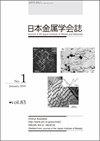贵金属回收利用的现状与问题
IF 0.4
4区 材料科学
Q4 METALLURGY & METALLURGICAL ENGINEERING
引用次数: 1
摘要
从制造过程中产生的废料中回收贵金属的工作已经广泛开展。回收过程要求保持废料的机密性,使用隔离的批次进行回收操作,回收率高,操作时间短,处理成本低。近年来,回收过程还面临着另外三个问题。首先是废料中贵金属含量的降低,因为它们被其他非︲黑色金属所取代。第二种是天然矿石中不含的金属污染。它们已被用于提高产品性能,但这些污染物使贵金属的提取和纯化变得困难。第三是在日本执行严格的环境法规,禁止持续使用某些化学品,如硝酸。本文介绍了一家贵金属回收公司为解决上述问题所做的工作。本文章由计算机程序翻译,如有差异,请以英文原文为准。
The Present State and Problems of Precious Metals Recycling
Recycling of precious metals from scraps generated from manufacturing process have been widely done. The recycling process calls for maintenance of confidentiality of the scrap, use of isolated lots for the recycling operation, high recovery rates, short operation time and low treatment costs. In recent years, the recycling process has been facing three additional problems. The first is the reduction in the precious metal content in the scraps because of their substitution by other non ︲ ferrous metals. The second is the contamination of metals that are never contained in natural ores. They have been used for upgrading the product perfor - mance, but those contaminations make it difficult to extract and purify precious metals. The third is the enforcement of stringent environmental regulations in Japan, which prohibits the continuous use of certain chemicals such as nitric acid. This paper describes the work carried out by a precious metals recycling company to solve the aforementioned problems.
求助全文
通过发布文献求助,成功后即可免费获取论文全文。
去求助
来源期刊

Journal of The Japan Institute of Metals
工程技术-冶金工程
CiteScore
0.70
自引率
0.00%
发文量
27
审稿时长
6-12 weeks
期刊介绍:
Information not localized
 求助内容:
求助内容: 应助结果提醒方式:
应助结果提醒方式:


